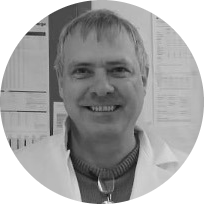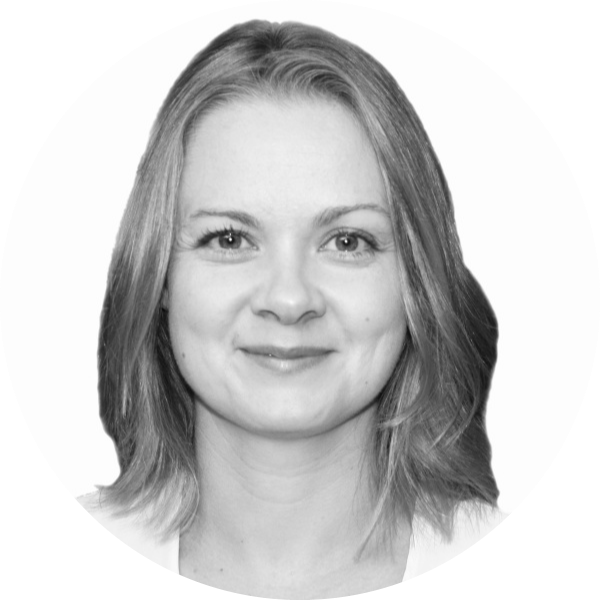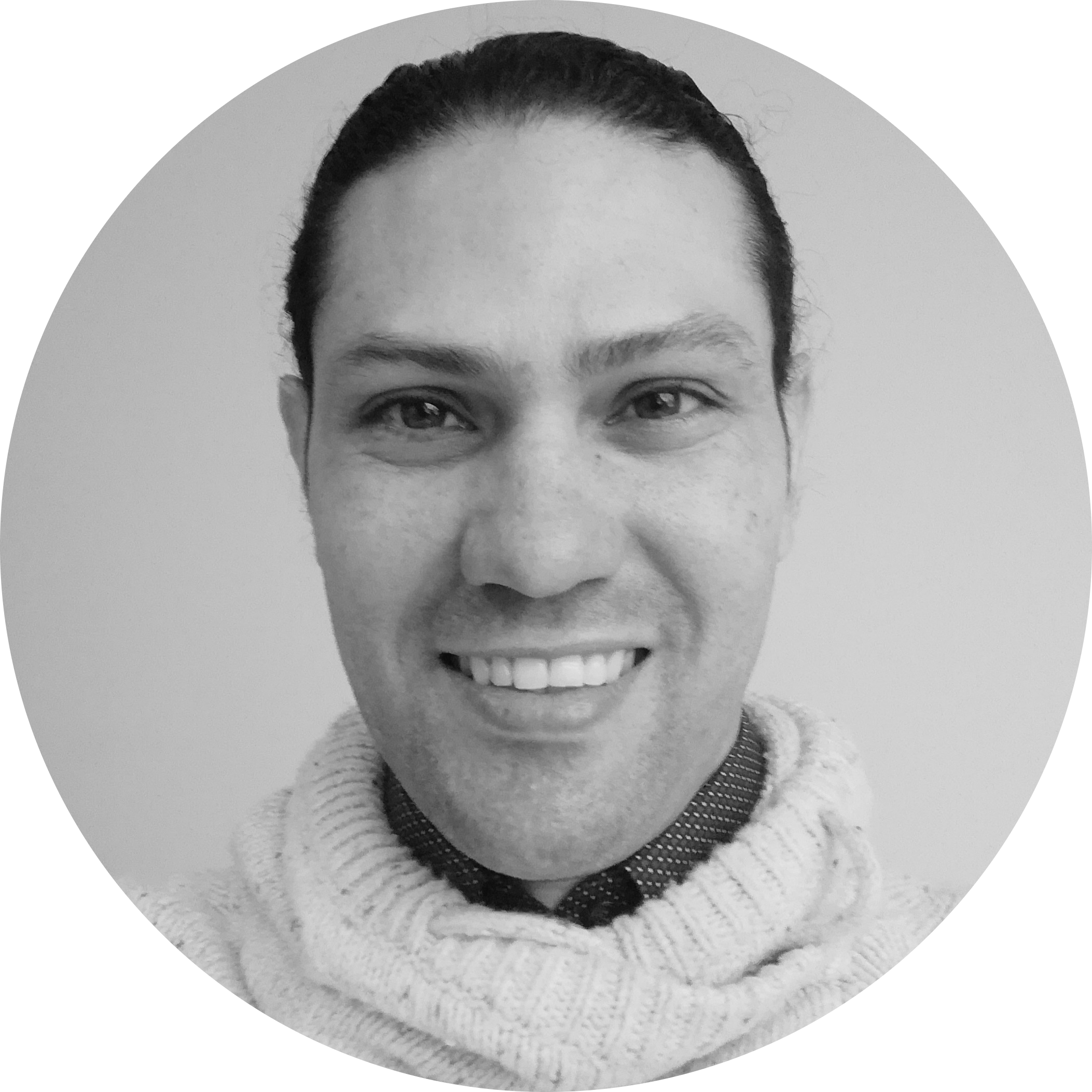Cure CLCN4 Research Network
Meet the driving force behind our mission—dedicated researchers & clinicians from around the world who are tirelessly working to unravel the complexities of CLCN4-related condition. Welcome to the heart of our research.

Dr. Vera Kalscheuer (Max Planck Institute for Molecular Genetics, Germany)
Vera’s work focuses on the identification of novel genes linked to neurodevelopmental disabilities, and on the molecular and functional characterization of selected genes and proteins in order to better understand the underlying molecular and pathomechanisms. With her research, she has discovered and contributed to the identification of numerous genes linked to various forms of neurodevelopmental disabilities, including CLCN4, thereby establishing a molecular diagnosis for patients and their families. In order to better understand CLCN4-related disorders, together with Dr. Emma Palmer and Dr Michel Pusch, she has conducted several studies on the genetic, clinical and functional impact of newly identified CLCN4 variants. To learn more about Vera’s work please click here.

Dr. Michael Pusch (Istituto di Biofisica, Italy)
My research group has a long-standing expertise in the biophysical characterization of ion channels and transporters with emphasis on anion channels, using state of the art high-resolution electrophysiological and optical techniques and expression in Xenopus oocytes and mammalian cell lines. The lab is also routinely performing site-directed mutagenesis to introduce mutations on the expression constructs. We have been involved in the discovery of novel molecular mechanisms underlying neurodevelopmental and neurodegenerative disorders caused by variants in the genes encoding the endolysosomal chloride/proton exchangers ClC-3, ClC-4 and ClC-6. We are continuing in functionally characterizing disease associated variants of CLC genes with particular emphasis in ClC-4 and its interaction with ClC-3, in a fruitful collaboration with Drs. Vera Kalscheuer, Emma Palmer, and Raul Guzman. To learn more about Michael’s work please click here.

Dr. Elizabeth Emma Palmer (Sydney Children's Hospital Network and UNSW, AUSTRALIA)
Emma is a senior clinical lecturer at the University of New South Wales, Australia and holds a research fellowship (Investigator Grant) from the NHMRC (National Health and Medical Research Council). Her work as a Clinical Geneticist, seeing families with rare genetic conditions at Sydney Children’s Hospital, informs her research, which aims to improve the patient journey for the 2 million Australians and 300 million people globally with a rare disease in an equitable and respectful manner. Emma first met individuals with CLCN4-related condition over 10 years ago, when she started work as a consultant clinical geneticist. It has been an honour to meet many other people with this condition and their families through her clinical work since then, and to connect with over 100 families and/or their clinicians globally. Emma’s research has focused at trying to understand the range of ways that changes in CLCN4 can impact the health and learning of people of all ages, if that changes over time, and how that knowledge can be translated into management guidelines and better person-centred care, therapies, and support. Her goal is to help co-design the tools and resources for an optimal model of care: so that every individual with this condition can live their most happy and fulfilled lives. You can read more about Emma and her research at her websites: https://research.unsw.edu.au/people/dr-elizabeth-emma-palmer and https://www.geneequal.com/ : including this video which was co-designed with people with intellectual disability to show how a health care team could give a genetic diagnosis (in this case CLCN4-related condition) to an adult with a neurodevelopmental condition in a way which is respectful and empowering.To learn more about Emma’s work please click here.

Dr. Raul Guzman (Forschungszentrum Jülich, Germany)
We aim to understand the physiological and pathophysiological mechanisms of ClC-3 and ClC-4 and the CLCN3/4-associated neuropathologies caused by their mutant variants. We use transgene technology (genetically modified mouse models, shRNA knockdown, lentiviral, and AAV9 transduction), patch-clamp electrophysiology, 3D morphological reconstruction, immunohistochemistry, molecular biology, and confocal microscopy to understand the cellular and molecular function of ClC-3 and ClC-4 in neuronal health and disease. We examine hippocampal and thalamic neurons’ electrical and morphological properties from acute or organotypic brain slices of Clcn3-/-, Clcn4-/-, and Clcn4 knock-in mice to identify neuronal dysfunction’s origin and molecular pathway. Our ultimate goal is pinpointing potential pharmacological strategies for treating CLCN3– and CLCN4-related disorders. We also use heterologous expression on immortalized cells combined with patch-clamp electrophysiology, confocal microscopy, and protein biochemistry to evaluate the functional properties of CLCN3– and CLCN4-variants. Recently, our group efforts clarified the roles of such transporters for the vesicular monoamine accumulation process and exocytosis, demonstrated the functional implication of Cl-/H+ exchangers in the regulation of electrogenic/excitability properties of sensory neurons, and functionally characterized several CLCN4 mutants. In close collaboration with Drs. Tobias Stauber, Michael Push, Jing Peng, and Kenneth Myers, we continue to evaluate disease-associated CLCN3– and CLCN4-variants. To learn more about Raul’s work please click here.

PROF. ANGELA MORGAn (Murdoch Children's Research Institute, Australia)
Prof. Angela Morgan is a National Health and Medical Research Council (NHMRC) Elizabeth Blackburn Fellow and leads the Speech and Language group at the Murdoch Children’s Research Institute. Angela is also a Dame Kate Campbell Professorial Fellow at the University of Melbourne and Director of the Speech Genomics clinic at the Royal Children’s Hospital, Melbourne, Australia. Her career has focused on understanding causation, predictors, prognosis and therapies for severe and persistent speech and language disorders in children. Most recently, Angela’s NHMRC Centre of Research Excellence (CRE) in Speech and Language team have identified over 30 genes associated with childhood apraxia of speech. Her team’s work is directly translated into international guidelines for clinical management of children with these rare genetic conditions. Angela’s team are pleased to be working with the CLCN4 community to better understand speech and language diagnosis, prognosis and treatment in the CLCN4-related condition. Ms. Alecka Garrett is an experienced speech pathologist in the CRE team and is enjoying working directly with families with close support from Angela and team. To learn more about Angela’s work click here. Details of the CLCN4 Speech & Language study here.

Are you working on CLCN4-related condition and want to join our network? Get in touch!

